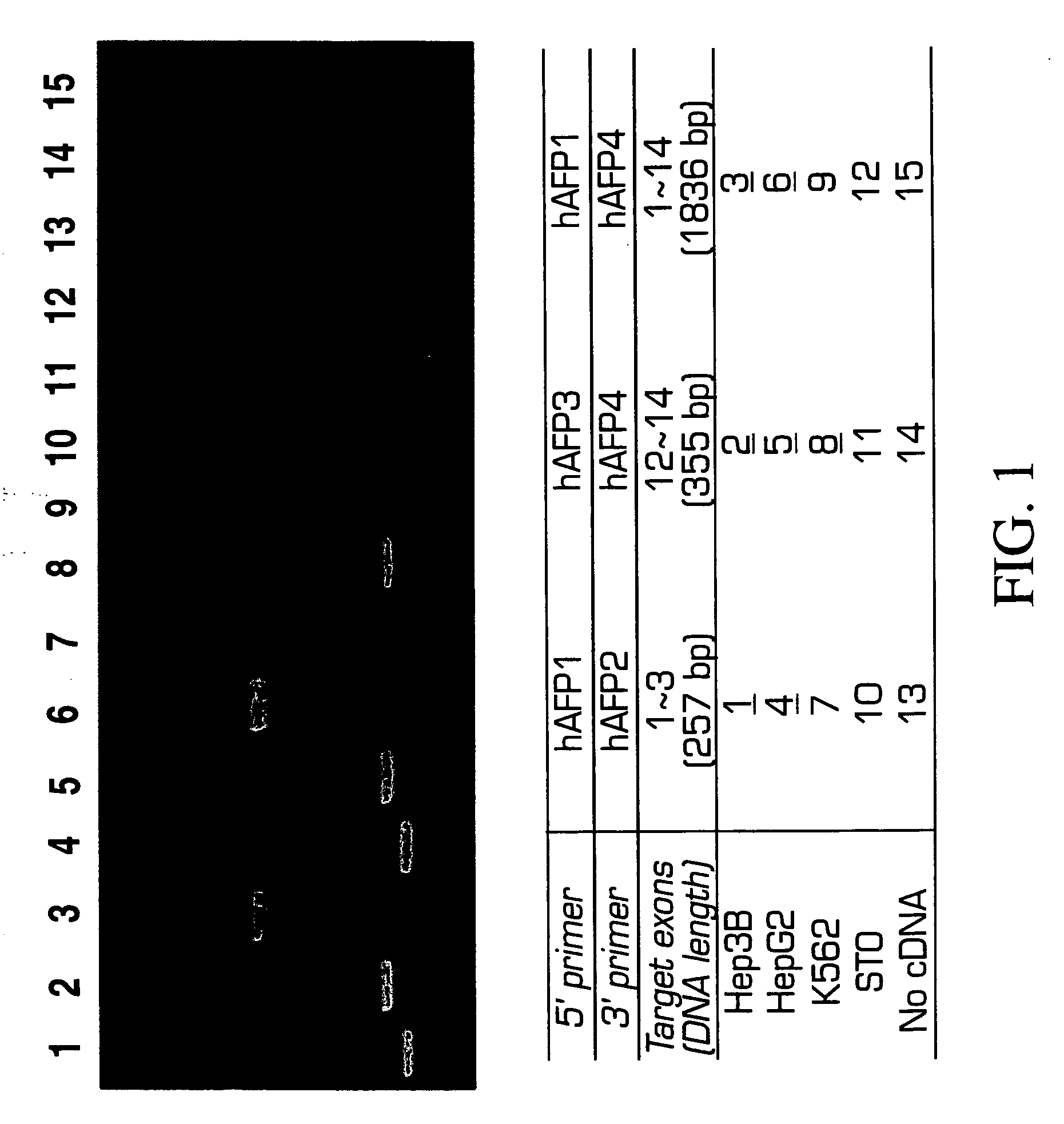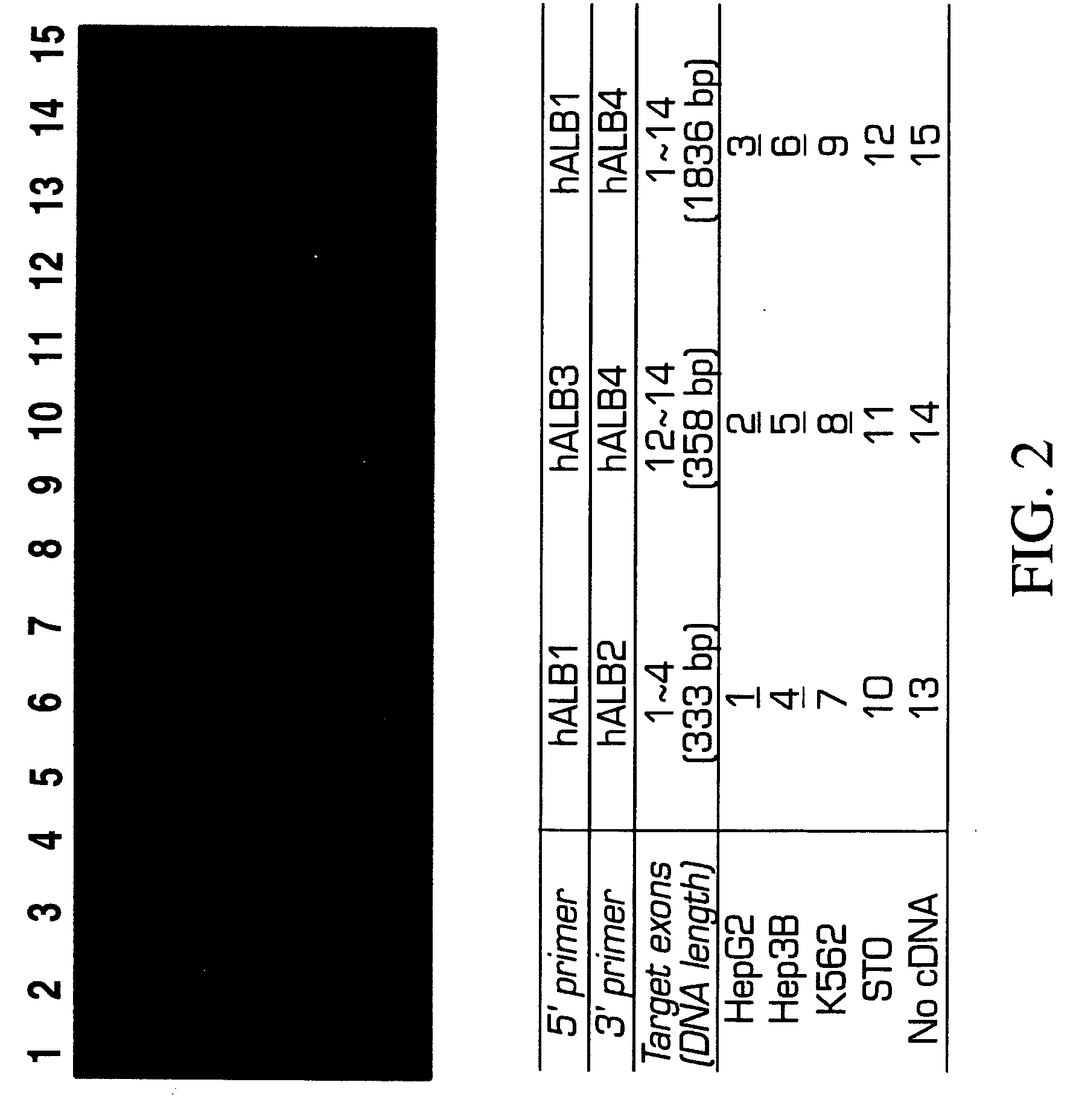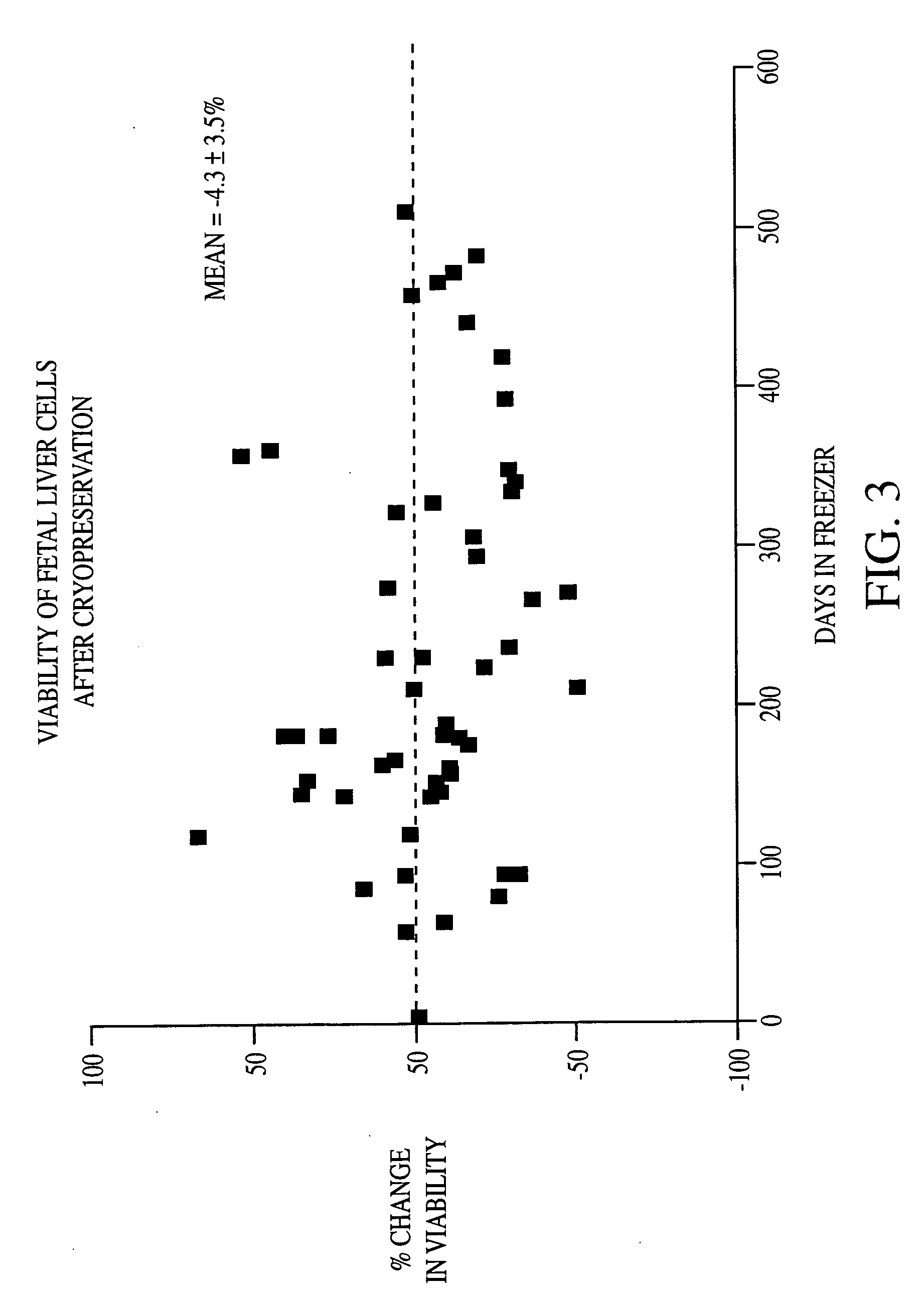Human liver progenitors
a technology of human liver and progenitors, which is applied in the field of human liver progenitors, can solve the problems of grave possibility of creating tumors in patients, unrealized plan to inoculate human es cells into patients, and residual es cells in the culture could pose the risk of tumorigenesis
- Summary
- Abstract
- Description
- Claims
- Application Information
AI Technical Summary
Benefits of technology
Problems solved by technology
Method used
Image
Examples
example 1
[0166] Analysis of variant forms of AFP and albumin expressed in hepatic versus other cell types.
[0167] Cell lines: Two human hepatomas, Hep3B and HepG2, are maintained in Eagle's MEM supplemented with 1 mM sodium pyruvate, 2 mM L-glutamine, 50 U / ml penicillin, 50 μg / ml streptomycin, 0.1 mM MEM non-essential amino acid solution, 5 μg / ml insulin and 10% FBS. A human erythroleukemia cell line, K562 and a mouse embryonic fibroblast cell line, STO, are maintained in DMEM / F12 supplemented with 2 mM L-glutamine, 50 U / ml penicillin, 50 μg / ml streptomycin, 5×10−5M 2-ME and 10% FBS.
[0168] RT-PCR: Total RNAs are extracted from Hep3B, HepG2, and STO by the method of Chomcznski and Sacchi N. Anal. Biochem 162: 156-159 (1987). The cDNAs are synthesized by oligo-dT priming and subjected to PCR amplification using primer sets designed by the inventors and prepared for human AFP or albumin. The primer sequences are as follows,
[0169] For AFP:
SEQ ID 1hAFP1:5′-ACCATGAAGTGGGTGGAATC-3′,SEQ ID 2hAFP...
example 2
Processing of Human Livers
[0195] Fetal Livers: The fetal livers come from multiple clinics affiliated with Advanced Biosciences Research (ABR), all in California, or from the Anatomical Gift Foundation (AGF) with clinics in the South (i.e., Georgia, Virginia), Northeast (Pennsylvania) or Midwest (Kansas, Colorado). The fetuses are collected from clinics; the tissues dissected free from the fetuses and placed into RPMI 1640 (Gibco) supplemented with insulin (Sigma, 5 μg / ml), transferrin (Sigma, 5 μg / ml), selenium (10−9M, and 5% fetal bovine serum (Gibco). The samples are then put on ice and shipped by courier to our lab, a process that can take 10-16 hours. Thus, we receive the samples approximately 24 hours after surgery. The samples are assigned a number with the prefix REN, given in chronological order of being received (REN 1, 2, 3, etc), where REN is an abbreviation for Renaissance.
[0196] Adult Livers: The adult livers come from the Anatomical Gift Foundation or from local su...
example 3
Fetal Liver Tissue Studies
[0212] The fetal livers arrive in the transport buffer (described above) and on ice. They are rinsed with a “cell washing buffer” consisting of RPMI 1640 (Gibco) supplemented with insulin (Sigma; 5 μg / ml), transferrin (Sigma; 5 μg / ml selenium (Johnson Matthey's mass spec trace elements; 10−9M), and a free fatty acid mixture bound to bovine serum albumin in a 1:1 molar ratio. The fetal livers are then put into a collagenase buffer for 15-20 minutes and then gently pressed through a “cellector” (Sigma) with an 800 mesh grid to yield small aggregates of cells; the “cell wash buffer” is used to facilitate the dissociation process. The aggregates of cells are then fully dissociated by pressing them through a 70 Micron filter (Falcon cell strainer, 70 μm nylon, catalog #2350) using the “cell wash buffer” to facilitate the process. The cells that pass through the 70 micron filter are kept separate from those that do not. Both samples are cryopreserved and checke...
PUM
| Property | Measurement | Unit |
|---|---|---|
| diameter | aaaaa | aaaaa |
| diameter | aaaaa | aaaaa |
| diameter | aaaaa | aaaaa |
Abstract
Description
Claims
Application Information
 Login to View More
Login to View More - R&D
- Intellectual Property
- Life Sciences
- Materials
- Tech Scout
- Unparalleled Data Quality
- Higher Quality Content
- 60% Fewer Hallucinations
Browse by: Latest US Patents, China's latest patents, Technical Efficacy Thesaurus, Application Domain, Technology Topic, Popular Technical Reports.
© 2025 PatSnap. All rights reserved.Legal|Privacy policy|Modern Slavery Act Transparency Statement|Sitemap|About US| Contact US: help@patsnap.com



